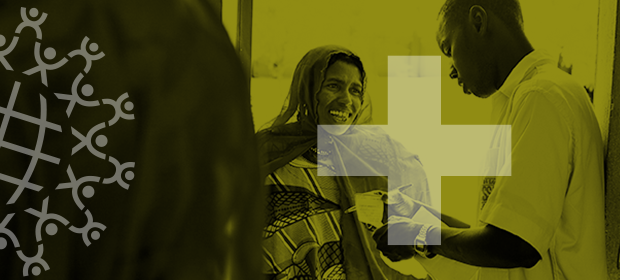Where We Work
See our interactive map


This post originally appeared on the Huffington Post.
Every year, nine million people contract tuberculosis (TB). If it takes you five minutes to read this article, 81 people will have contracted TB by the time you finish.
TB is a treatable and curable disease. Yet 1.5 million people die from TB every year. Nearly 18% of those deaths and 25% of all new TB cases happen in one country: India, where I live and work.
Today marks World TB Day 2015 and, as it was last year, the focus of the event is on reaching the three million people who go undiagnosed, untreated, or unregistered by national TB control programs.
Across India there are a 'missing million' undiagnosed TB cases.
In India, care for TB—both diagnosis and treatment—is made freely available through the public health system. However, the public sector, which has long been the sole domain for TB care, struggles under immense patient volume and many cases fall through the gaps—it is estimated that across India there are a 'missing million' of undiagnosed TB cases who are unable to receive the care they need.
We must do better. And we must remember that TB care in India is not easy.
Diagnosis is difficult. Many facilities lack essential equipment and medicines. Providers are often unaware of signs and symptoms.
And during the course of treatment, which can takes weeks or months, many patients default on care and fail to finish their treatment regimen—the current care system in India simply lacks the capacity to keep track of every patient.
In 2014, our organization, World Health Partners (WHP), launched the Universal Access to TB Care (UATBC) to save lives and reduce diagnostic delay for TB by expanding the TB care ecosystem to include private-sector health care providers.
This initiative, a public-private partnership with the State Government of Bihar, leverages India's vast private sector to reduce diagnostic delay and increase the number of TB notifications in Patna, a city of 1.6 million people in the state of Bihar.
We have engaged nearly one-fifth of Patna's private providers, working with them to facilitate accurate diagnosis and free, appropriate treatment. We use an innovative technology-supported follow-up system to monitor and encourage patients to adhere to treatment.
In Patna, we've expanded the health system's ability to find patients who already exist.
During the last six months of 2014, the initiative delivered 2,473 TB case notifications from the private sector, nearly 54% of Patna's 4,610 total case notifications during the same period. This is a remarkable achievement considering that just over a year ago, the number of private sector TB notifications in Patna was zero.
More people are not suddenly contracting TB in Patna. What we have done in Patna is expand the health system's ability to find patients who already exist—using these existing providers to locate members of TB's 'missing million.'
Our work on the UATBC initiative serves as an example for how a public-private partnership can enhance the capacity of the public health system. The private sector has become a complement to the public system in Patna—meaning more access to care in communities who need it and cost-savings because providers are already in situ.
This strategy fits well with my founding vision for WHP—providing health care to those in need by mobilizing existing health resources in new, efficient ways.
Get the latest updates from the blog and eNews




